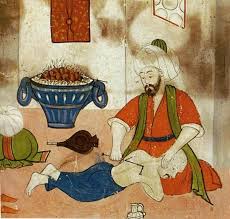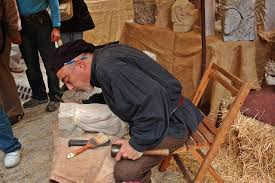
Physicians operate as craftsmen. We are organized into guilds and use the power of the state through licensing laws to keep competitors out. We train new practitioners using the apprentice model. We link our pay to directly touching our products, one at a time, whether it be in the operating room, the exam room, and less so in the lab or reading room. We understand that people love craftsman and are suspect of things that are mass produced. We resist mass production in medicine. However, we tend to lose sight of the fact that our standard of living and life expectancy has improved remarkably over the past 300 years because we have moved from craftsman produced goods and services to mass produced items. We can value craft items now only because mass production has made us wealthy enough to have the disposable income to acquire such luxuries.

Still we maintain medicine as a craft industry and place the most expensive craftsman (us) in the center of delivery. Can we afford to continue to do this? We have deployed increasingly complex sets of interventions and recommendations where the yield from the complexities are marginal. The increase of complexity has been
underwritten by insurance which has for the most part has insulated the consumer from the cost increases, until now. Obviously patients have liked this situation because they are insulated from costs. Deliverers of care have liked this situation because it has allowed them to deliver increasingly complex and expensive (high margin) care without the risk of sticker shock. Furthermore, this could all be delivered without disrupting the craftsman model of care, until now.

Throughout history fields controlled by craftsman have evolved away from the craft model. The major transitions and disruptive innovations were generally not driven by craftsman. It is hard to imagine that medicine will be any different. Craftsman, including physicians, are loathe to drive innovation which will disrupt their status and livelihoods. Furthermore, physicians tend to value their services to patient more than patients value them. In contrast, patients value convenience and cost more than those delivering the services. This disconnect in terms of value has been hidden due to a payment system which insulates those receiving the services from the full costs.

The time and convenience value issue is coming to the forefront. The use of various surveys of patients probing their impressions of the experience of care delivery almost invariably highlights convenience issues. It appears that patients may value convenience and cost more than they value quality. Patients can be just as happy or happier with cheap and good enough as opposed to the best. Our responses as medical professionals historically has been like the old phone company, "We don't care because we don't have to". Addressing patient priorities has not been our priority because, unlike our patients, we value quality of the care we deliver more than convenience of delivery. What will happen when other non-craftsman parties who get into the health care delivery business have priorities which align more closely with what patients want more (cheaper, good enough, and convenient) than what we physicians believe they should desire (the best quality possible)? I believe the results are predictable.
Furthermore, the craft model of health care delivery looks increasingly like a trap. The exploding cost of care now exerts substantial price pressures which physicians have responded to by increasing volume and through put. However, there are limits to how fast one can run the craft model. It is not particularly scalable and by insisting we touch every patients, we become bottlenecks, and expensive ones at that. The product we attempt to deliver becomes more and more divorced from what the public desires.
What is a craftsman to do? Should we remain true to our ancient craft or should we embrace new non-craftsman based care models recognizing different priorities? If we have interventions and delivery approaches which can reach more people at lower cost and make lives better, we should strive to deploy them in ways which are affordable and scalable. However, our training programs are based upon the legacy of apprenticeship of the craftsman and guilds. Should training programs be the bastions of past, are we preparing our trainees for a world which is not likely to exist in the future with skills sets that the public is not particularly interested in using? The key question becomes, will physicians lead movements driving change, be dragged kicking and screaming into new models, or simply be bypassed and left behind?
1 comment:
This is concerning and I don't want to believe it (maybe that's why I don't). Are there any examples of craftsmen driving a change like this? It seems extremely unlikely - craftsmen became craftsmen because they were good at it and enjoyed it. Physicians, one would assume, became physicians for the same reasons. For both craftsmen and physicians, the majority of individuals are not going to have the talent, ability, or skills to be a leader, manager, or driver of change. So, if this does play out this way, most physicians will be up the proverbial creek with no good options.
I will point out that not all industries go to complete mass production - the food service industry being the most obvious example - some mass production (Fast Food) but also still many craftsmen (true chefs) who are quite successful. Now, which one is more important to society? Fast food, both in the number of people employed and in the amount of food produced. However, at least in this model, there is still room for physicians to be chefs.
Post a Comment